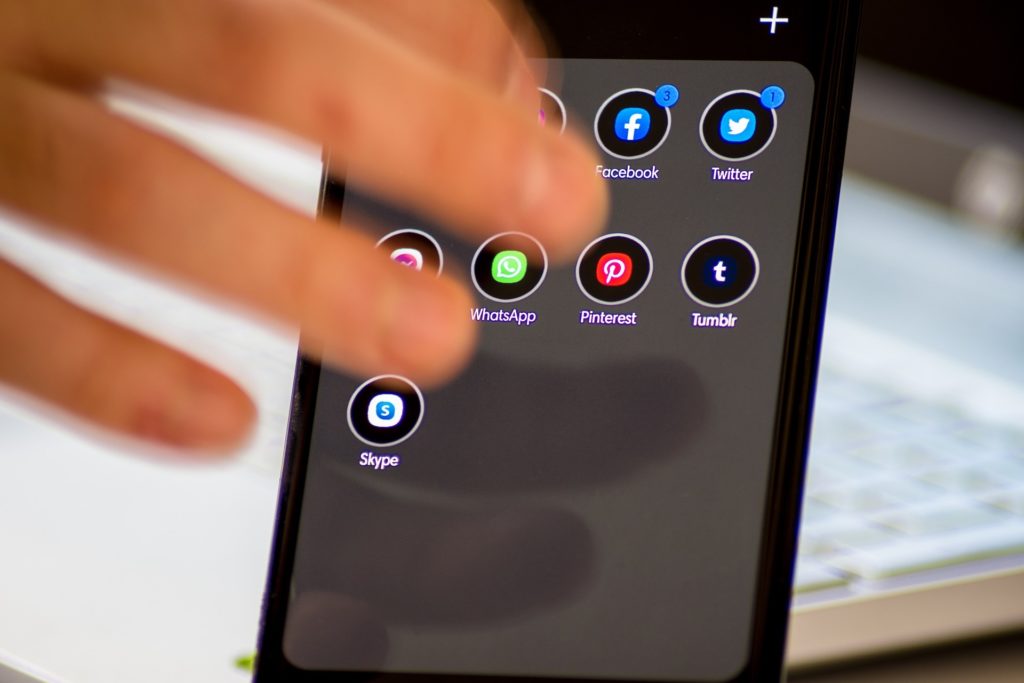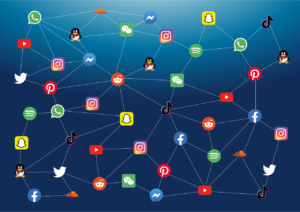- Calls to this hotline are currently being directed to Within Health, Fay or Eating Disorder Solutions
- Representatives are standing by 24/7 to help answer your questions
- All calls are confidential and HIPAA compliant
- There is no obligation or cost to call
- Eating Disorder Hope does not receive any commissions or fees dependent upon which provider you select
- Additional treatment providers are located on our directory or samhsa.gov
Is TikTok Encouraging Teens to Develop an Unhealthy Relationship with Their Bodies?

Contributor: Staff at Timberline Knolls Residential Treatment Center
Over the past several years, TikTok has become one of the most popular video apps in the world, with more than 800 million users [1]. Like other major social media platforms, people use TikTok to share experiences, connect with others, and learn about practically any topic you can think of.
However, with such a wide reach, the content some people publish on TikTok has the potential to be very damaging to viewers, especially younger ones. Of its users, 41% are between the ages of 16 and 24 [1]. This is a very impressionable age group and a time when many begin to develop problems with self-image and body dysmorphic disorder.
The average age for the onset of anorexia symptoms is 16-17, while the average age for the onset of bulimia symptoms is 18-19 [2]. With these age groups being especially active on TikTok, the platform can be damaging to the self-image and eating disorder recovery efforts of some users.
Inspiration or Thinspiration
Since the advent of social media, it has acted as an outlet to share stories, learn, and find support. This can be extremely beneficial for those who are struggling with mental health concerns, including eating disorders. When used safely, young people can learn from others who are in recovery from an eating disorder and become better educated on mental health topics.
However, the information users present on TikTok is not always correct, and they don’t always portray eating disorders accurately. The most worrisome content involves unhealthy weight loss trends, dieting tips, and posts that potentially promote eating disorders.
The problem is that not everyone on the internet has sought appropriate eating disorder treatment, and they might instead be inadvertently promoting “thinspiration” or “thinspo.” Social media platforms like Instagram and TikTok use this play on words to promote the thin ideal and encourage eating disorder habits [3].
Terms like “pro-ana,” used to promote dangerous thoughts and behaviors related to anorexia, and “pro-mia,” used to promote bulimia, started on the dark web and have since made their way to apps like TikTok. Content that uses these phrases often implies that the behavior shown is a lifestyle choice rather than symptoms of a mental health condition [3]. This encourages some users to behave in unhealthy ways that worsen their eating disorder symptoms rather than seeking healthy alternatives and professional help.
What Makes TikTok Threatening to Recovery?
The potential to scroll through looping videos of harmful and triggering actions with a simple search has made TikTok damaging for many. Although TikTok representatives say that they use a combination of techniques to remove such content, campaigners note that the app is slow in dealing with it [1].
Eating disorder support groups like the Butterfly Foundation acknowledge TikTok’s failure to moderate and flag videos promoting unhealthy weight loss. This has been a major issue since the beginning of the app’s popularity, and it has gotten worse amid the pandemic [3].
Because TikTok allows anyone to create and publish content, people can promote whatever dietary or weight loss advice they like without evidence of it being healthy. TikTok also allows content that indirectly promotes eating disorders, with popular topics like “what I eat in a day — under 1,200 calories” and “how to prove how small your waist is with household items” [1].
This type of content is damaging on any social media platform, but TikTok’s algorithm appears to make things even more dangerous. People do not have to actively search for certain topics to see them, and videos can appear as suggested content for that user as soon as they open the app [1].
 TikTok’s explore feed shows content from accounts the user may not even be following and is often tailored based on related searches they’ve made or videos they’ve interacted with.
TikTok’s explore feed shows content from accounts the user may not even be following and is often tailored based on related searches they’ve made or videos they’ve interacted with.
This means that if someone watches a video related to “pro-ana” out of curiosity, they are then targeted with many more weight loss tips and “thinspo” content in their feed. For those who are struggling with an eating disorder, and explore feed filled with this type of content can be extremely triggering.
How to Use TikTok Safely
For many, the best solution may be to get rid of their TikTok account altogether. However, it’s possible to use social media safely.
A spokesman for TikTok said that “For some, TikTok provides an opportunity to share their experience of living with or recovering from an eating disorder and expression of this nature is permitted within the boundaries of our community guidelines” [1].
Until those guidelines become stricter, consider these tips for staying healthy and avoiding damaging eating disorder-related content during your next TikTok session:
- Know your triggers – Understanding what triggers your symptoms can help you recognize the content you should avoid.
- Do not follow certain accounts – It can be tempting to follow accounts promoting weight loss and dieting. However, you should avoid any content that could be damaging to your recovery.
- Utilize the “not interested” button – If you do see a triggering video, utilize TikTok’s “not interested” button (represented by a broken heart) under the share options. This will tell the algorithm not to show you content like this again.
- Report unhealthy content – You can help protect yourself and your fellow users by reporting potentially unhealthy and dangerous videos.
- Take a break from your account – Sometimes, seeing triggering content is inevitable. The best thing you can do is to take a break from TikTok to focus on your recovery.
- Seek additional support – You should always take eating disorder symptoms seriously. Support is available if you are struggling to control your symptoms.
There are many positives to the world of social media. Unfortunately, some of the latest trends and content can point users toward damaging thoughts and behaviors, especially regarding their body image. If you’re struggling with the symptoms of an eating disorder, help is available.
References:
[1] Lantos, E. (2020, June 22). TikTok: Fears videos may ‘trigger eating disorders.’ BBC. https://www.bbc.com/news/uk-wales-52919914[2] Anorexia & Bulimia Care. (2019). About Eating Disorders. Anorexia & Bulimia Care. https://www.anorexiabulimiacare.org.uk/about/about-eating-disorders
[3] Dempster, A. (2020, May 12). TikTok weight-loss videos fuelling eating disorders amid coronavirus lockdowns, health experts say. ABC NEWS. https://www.abc.net.au/news/2020-05-13/experts-concerned-tiktok-content-fuelling-eating-disorders/12215986
About Our Sponsor:
At Timberline Knolls Residential Treatment Center, located outside of Chicago, Illinois, we provide specialty care for women and girls who are living with eating disorders.
The opinions and views of our guest contributors are shared to provide a broad perspective of eating disorders. These are not necessarily the views of Eating Disorder Hope, but an effort to offer a discussion of various issues by different concerned individuals.
We at Eating Disorder Hope understand that eating disorders result from a combination of environmental and genetic factors. If you or a loved one are suffering from an eating disorder, please know that there is hope for you, and seek immediate professional help.
Published January 11, 2021, on EatingDisorderHope.com
Reviewed & Approved on January 28, 2021, by Jacquelyn Ekern MS, LPC

The EatingDisorderHope.com editorial team comprises experienced writers, editors, and medical reviewers specializing in eating disorders, treatment, and mental and behavioral health.

